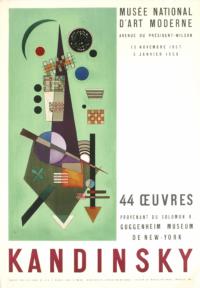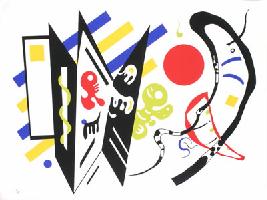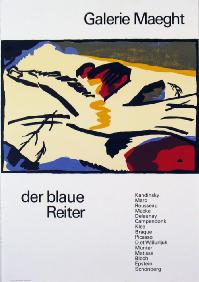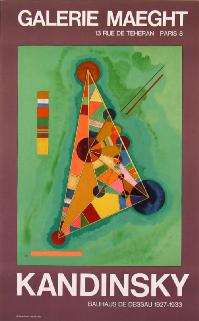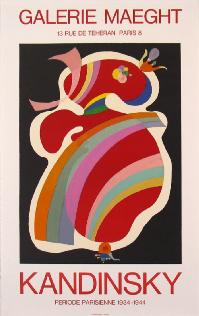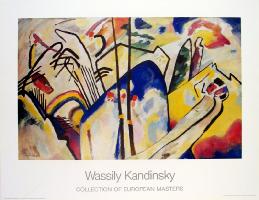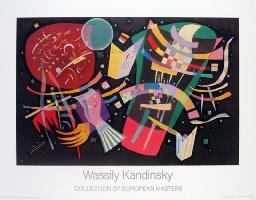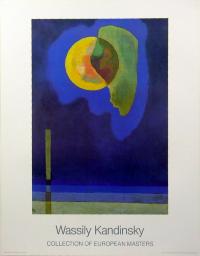Wassily Kandinsky Biography
Wassily Kandinsky (1866-1944), Russian painter, whose exploration of the possibilities of abstraction make him one of the most important innovators in modern art. Both as an artist and as a theorist he played a pivotal role in the development of abstract art.
Born in Moscow, December 4, 1866, Kandinsky studied at the Academy of Fine Arts in Munich, Germany, from 1896 to 1900. His early paintings were executed in a naturalistic style, but in 1909, after a trip to Paris during which he was highly impressed by the works of the fauves and postimpressionists, his paintings became more highly colored and loosely organized. Around 1913 he began working on paintings that came to be considered the first totally abstract works in modern art; they made no reference to objects of the physical world and derived their inspiration and titles from music.
In 1911, along with Franz Marc and other German expressionists, Kandinsky formed Der Blaue Reiter (The Blue Rider) group (so called for Kandinsky's love of blue and Marc's love of horses). He produced both abstract and figurative works during this period, all of which were characterized by brilliant colors and complex patterns.
Kandinsky's influence on the course of 20th-century art was further increased by his activities as a theorist and teacher. In 1912 he published Concerning the Spiritual in Art, the first theoretical treatise on abstraction, which spread his ideas through Europe. He also taught at the Moscow Academy of Fine Arts from 1918 to 1921 and at the Bauhaus in Dessau, Germany, from 1922 to 1933.
After World War I (1914-1918), Kandinsky's abstractions became increasingly geometric in form, as he abandoned his earlier fluid style in favor of sharply etched outlines and clear patterns. Composition VIII No. 260 (1923, Guggenheim Museum, New York City), for instance, is composed solely of lines, circles, arcs, and other simple geometric forms. In very late works such as Circle and Square (1943, private collection), he refines this style into a more elegant, complex mode that resulted in beautifully balanced, jewel-like pictures.
He was one of the most influential artists of his generation. As one of the first explorers of the principles of nonrepresentational or “pure” abstraction, Kandinsky can be considered an artist who paved the way for abstract expressionism, the dominant school of painting since World War II (1939-1945). Kandinsky died in Neuilly-sur-Seine, a suburb of Paris, on December 13, 1944.
Wassily Kandinsky Paintings
|
|
|
|
|
44Oeuvres Mourlot |
Musee National D'art Moderne |
Stencil, 1935 |
|
|
|
|
|
Der Blaue Reiter |
Bauhaus, 1965 |
La Forme Rouge, 1938 |
|
|
|
|
|
Komposition 4 ,1939 |
Komposition X 1939 |
Gelber Kreis |
|
|
|
|
|
Aquarelle aus Dem,1922 |
Aquarelle Gastebuch,1925 |
Kirche in Murnau 1910 |
|
|
|
|
|
Akzent in Rosa 1926 |
Ringsum 1924 |
Schwarzes Dreieck 1923 |
|
|
|
|
|
Gebogene Spitze 1924 |
Murnau, 1909 |
Stille Harmonie 1924 |
|
|
|
|
|
|
|
|
|
Kleine Freuden, 1913 |
|
|
Wassily Kandinsky Wallpaper
|
|
|
|
Farbstudie |
|
|
|
|
|
|
|
|
|
Wassily Kandinsky Quotes
+ An empty canvas is a living wonder.. far lovelier than certain pictures.
+ There is no must in art because art is free
